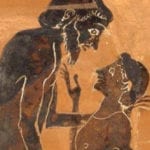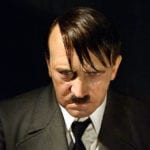 Mysteries
Mysteries  Mysteries
Mysteries  History
History 10 Surprising Stories About the Texas Rangers
 Humans
Humans 10 Philosophers Who Were Driven Mad by Their Own Theories
 Miscellaneous
Miscellaneous 10 Video-Game-Worthy Weapons and Armors from History
 Weird Stuff
Weird Stuff 10 Psychics Who Accurately Predicted Wartime Events
 The Arts
The Arts 10 Pieces of Art Inspired by a Broken Heart
 Health
Health 10 Science Fiction-Sounding New Medical Treatments
 History
History 10 Surprising Facts About the Father of Submarine Warfare
 Space
Space Ten Astonishing New Insights into Alien Worlds
 Weird Stuff
Weird Stuff 10 Bizarre Summer Solstice Rituals Still Practiced Today
 Mysteries
Mysteries Top 10 Haunting Facts About the Ghost Ship MV Alta
 History
History 10 Surprising Stories About the Texas Rangers
 Humans
Humans 10 Philosophers Who Were Driven Mad by Their Own Theories
Who's Behind Listverse?

Jamie Frater
Head Editor
Jamie founded Listverse due to an insatiable desire to share fascinating, obscure, and bizarre facts. He has been a guest speaker on numerous national radio and television stations and is a five time published author.
More About Us Miscellaneous
Miscellaneous 10 Video-Game-Worthy Weapons and Armors from History
 Weird Stuff
Weird Stuff 10 Psychics Who Accurately Predicted Wartime Events
 The Arts
The Arts 10 Pieces of Art Inspired by a Broken Heart
 Health
Health 10 Science Fiction-Sounding New Medical Treatments
 History
History 10 Surprising Facts About the Father of Submarine Warfare
 Space
Space Ten Astonishing New Insights into Alien Worlds
 Weird Stuff
Weird Stuff 10 Bizarre Summer Solstice Rituals Still Practiced Today
10 Strange Messiah Claimants And Heralds To The Second Coming
Religion can be a dangerous, powerful thing. Over the centuries, countless lives have been lost in the name of it. But there have also been a handful of truly fascinating characters who branched off from mainstream religion, gaining their own following by claiming to be the reincarnation of Jesus Christ or the gateway to the Second Coming.
10 William Hacket

In 1591, William Hacket made a rather meteoric rise from servant to well-off widow’s husband to Jesus Christ.
The illiterate former servant had recently married a rich widow and had already reduced them to poverty when he decided that he was capable of performing miracles. This, in turn, obviously made him the reincarnation of Jesus Christ. His followers claimed that the divine aura surrounding him when he prayed was unmistakable. They were so convinced of his divinity that they were willing to overlook his insane temper. One time, Hacket bit off someone’s nose simply because he didn’t like that person.
After making the rounds of a handful of smaller English towns, Hacket headed to London and appointed two men to be his prophets. One was the prophet of mercy, and the other was the prophet of punishment. While he headed into Cheapside and preached about the Bishop of Canterbury’s treason against God and Queen Elizabeth’s unworthiness to be queen—punctuated by declarations of his immortality and invincibility—his prophets went farther into the city to spread his word to even more people.
If any of this sounds like a bad idea, it absolutely was. Queen Elizabeth got word of it, had his prophets arrested, and put Hacket on trial for treason for suggesting that she shouldn’t be queen. His other actions—such as taking an iron poker to her picture—got him convicted and sentenced to death. When Hacket was marched to the scaffold, he proclaimed that God had absolutely no choice but to rescue him. Otherwise, he was going to be giving God the old what for when he got to heaven. Needless to say, he wasn’t rescued.
His so-called prophet of mercy, Edmund Copinger, died in prison when he decided to starve himself to make a point. How much of Copinger’s participation in the scheme came from an honest belief in Hacket and how much was due to his own beliefs that something major needed to change in England’s religious practices is unclear.
9 David Shayler
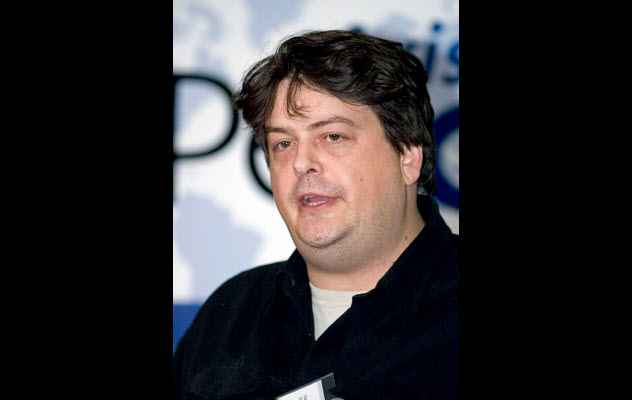
Ex-MI5 officer David Shayler was once in the middle of a massive expose on some pretty nasty stuff done by the British intelligence division. He claimed that MI5 had some shady dealings with the IRA and that MI6 was funding Islamic radicals. Needless to say, MI5 no longer wanted to employ him after his revelations, so he had some revelations of his own. Shayler became a transvestite that preferred to be called Delores and insisted that he was the latest reincarnation of Jesus Christ.
According to Shayler, he is following a long line of previous reincarnations of Jesus, putting him in such fine company as King Arthur, Macbeth, and most recently, Che Guevara. Shayler claims that he realized his divinity when he had a premonition of a bombing in a London nightclub in 2007. To further support his theories, he discovered that the engravings on the staff carried by Moses’s older brother in the Old Testament were an anagram of the words, “David Shayler, Righteous King.” He was also pretty sure that his John the Baptist was BBC presenter David Icke, who famously claimed that the world was run by shape-shifting lizards.
Icke, though, focused too much on the negative, while Shayler (and his assembled, drug-addled followers) wants to focus on the prophecies and the humorous side of religion. Specifically, he’s enjoying the fact that Jesus Christ was reborn as a transvestite, which he claims is the perfect mix of male and female. He admits, too, that he’s fallible—it’s the human part of him. But those that live with and around him seem more than content with accepting the good with the bad.
8 Jones Very
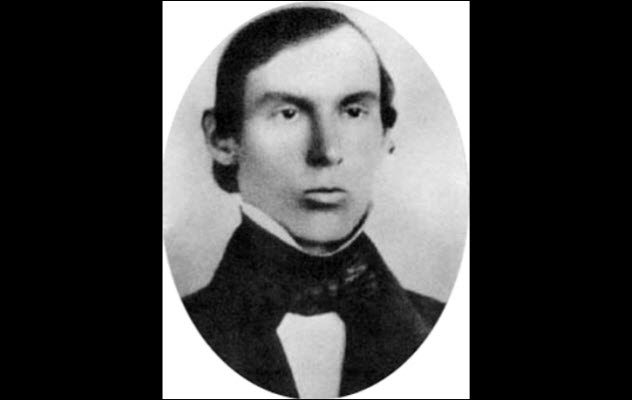
An unlikely vessel for the return of the Messiah, Jones Very was a Harvard graduate and the son of a woman who shunned religion after the early death of his father (who was also his mother’s first cousin). In spite of the family’s relative poverty, Very was accepted into Harvard, graduated second highest in his class in 1836, and became a tutor in Greek.
By all accounts, everyone loved him, but the problems started when he began telling his students, “Flee to the mountains, for the end of all things is at hand.” Very believed that Christ was using him as a way to return to the world and made no secret of his beliefs. He was, perhaps not surprisingly, committed to the McLean Asylum—a confinement that only lasted a month. Realizing that they couldn’t help him, they released him because he seemed harmless.
On September 13, 1838, Very claimed to have succeeded in ridding himself of all sense of the sensual and completely embraced the perfect genius that God had given him. It was on that day that he became suitable to channel the energy of Christ and open the door to the Second Coming.
In part, Very’s beliefs stemmed from his mother’s disbelief and an incredible drive to bring her into the fold. His parents, who had never married, were in desperate need of saving, and he was going to be the savior that at least rescued his mother.
After his release from the asylum, Very continued preaching throughout New England. Although he was able to strike up a relationship with certain people—like Ralph Waldo Emerson—no one ever quite made the leap to actual disciple. When Very failed to attract the following that he thought he should have, he retreated to a life of isolation for a year to write a massive number of poems. Emerson agreed to edit the works on their way to publication. But when Emerson suggested changes, Very was offended that anyone would dare to change the words of God.
Eventually, his religious zeal fizzled out. A major contributor to the transcendentalism movement, he died 40 years later.
7 John Thom (Sir William Courtenay)
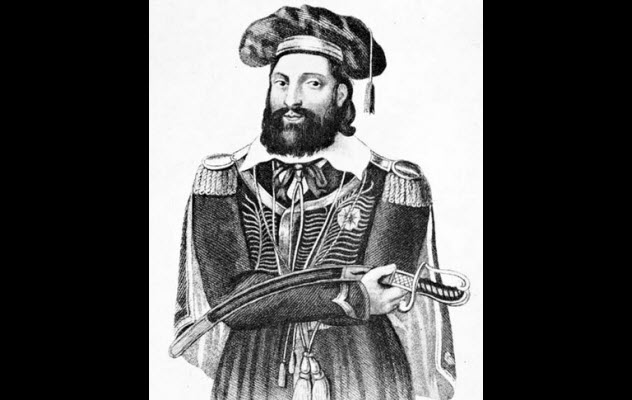
On May 31, 1838, members of the British military were called to end a riot that had been given the rather idealistic name of the “Battle of Bossenden Wood.” Led by a man claiming to be Sir William Courtenay, the rioters were protesting against the New Poor Law of 1834. Sir William’s real name was John Thom, and he also claimed to be the Savior of the World.
Thom had taken the name of Sir William Courtenay, a knight of Malta, when he left his native Cornwall for Kent. Said to have a commanding presence and an unmistakable speaking ability, Thom ran for office in Canterbury. It was only after he was convicted of perjury that he was committed to the county’s lunatic asylum.
After four years, he was released into the care of friends who apparently wasted no time in setting him loose again. By this time, it was 1838, and he had gathered quite a following. He claimed that he was the Messiah, who was sent to Earth with a divine mission. According to The Annual Register, his followers were “apparently scarcely less insane than himself.”
The asylum had ruled that he was harmless, but he soon started preaching some dangerous ideas. To those who followed him, Thom promised large estates and riches beyond their wildest dreams. He assured them that he would make it all happen with his influence at court, where he often sat beside the royal family. Calling himself the “Savior of the World,” Thom claimed that he was “invulnerable to steel or shot” and demonstrated what must have been some convincing stigmata.
By May 28, he began his march across the countryside, gaining followers as he went. When he came upon a constable on the morning of May 31, Thom shot and killed the man, kicking off a battle that would end with 12 people dead, six injured, and a guilty verdict for Thom and 18 of his followers, who went on trial for willful murder. Even after Thom was dead, some of his followers insisted that he was their savior and that their divine master would return.
6 David Reuveni

How many of David Reuveni’s claims were made out of an honest religious belief and how many were just an ambitious swindle, we’re not sure. He first showed up in Venice in 1523, where he claimed to be the commander in chief of his brother’s army. His family pedigree was an impressive one, as he said he could trace his roots back to King David and the tribe of Judah. At other times, he claimed that he was the son of King Solomon and that his brother ruled several of the lost tribes of Israel, including Reuben, which gave them their name.
In Venice, Reuveni asked for help in getting to the Pope with a mission of great importance. While most people thought he was nuts, he got enough support to get him to Rome—riding on a white horse. He appealed to Pope Clement VII for the creation of a peace treaty between the Christians and the Jews that would let them team up against the Muslims. His diary—which is one of the most complete sources we have on him—says that he asked for letters from the Pope to take to the mythical Prester John and to Portugal, which seemed to be his ultimate destination.
Bearing banners emblazoned with the Ten Commandments, Reuveni was met in Portugal with something of a mixed response. While some believed that he was the herald of the Messiah and of religious royalty, not everyone was convinced.
Among the believers was Diogo Pires, a royal secretary in the Portuguese high court of justice. After hearing Reuveni’s claims that he was gathering forces to free Palestine, Pires circumcised himself and changed his name to Solomon Molcho. Reuveni declined Molcho’s company until Molcho successfully established himself in Rome with the protection of the Pope.
Reuveni was arrested by Charles V, but he eventually made it back to Italy (and Molcho). However, Reuveni fell into some dangerous waters when he forged documents from the Pope, supposedly to replace ones that he’d lost. Reuveni and Molcho were returned to Spain and turned over to the Inquisition. After being charged with trying to get good Christian folk to defect to Judaism, Molcho was burned at the stake, and Reuveni died in prison.
5 Sergey Anatolyevitch Torop
This self-proclaimed “Jesus of Siberia” began preaching in 1991, and to give credit where credit’s due, Sergey Anatolyevitch Torop—who also calls himself “Vissarion”—successfully filled a void that was getting larger in communist Russia. Since his first spiritual revelation after he was fired from his job as a traffic cop, he’s amassed about 10,000 followers at his Church of the Last Testament. About 4,000 of them now live in his growing community in the wilds of Siberia, where they forgo the use of money, live a vegan lifestyle, and try to make as small an environmental footprint as they can by relying on things like solar power.
All that doesn’t sound so bad, really, and at this point, we get the attraction. It gets weirder, though.
Vissarion also preaches that in order for a utopian society to truly exist, there need to be some definite rules, especially governing the division of labor between men and women. There are jobs for men and jobs for women, and if some woman gets it into her head that she’s going to be a leader of some sort, she’ll pay the price. “The harmony will punish her with a woman disease,” explained one of Vissarion’s female followers to The Huffington Post.
Vissarion’s followers also believe that aliens are real and that many church members have met with these beings from outer space. Unfortunately, they don’t have souls, but they will be involved with the end of our world. He’s a little vague on how that’s all going to happen, but that’s part of the doctrine. Although Vissarion is sure that he knows when the world is going to end, he also believes that there are some things that ordinary humans just weren’t meant to know. Life’s easier that way, he says, and people are more themselves.
Defining our features and traits, the soul is a tricky thing, and it’s something that Vissarion claims to be able to feel within a person. Church members are required to live by certain rules that actually contain some bits of wisdom. For example, no one is supposed to be or act superior to anyone else.
4 William Davies
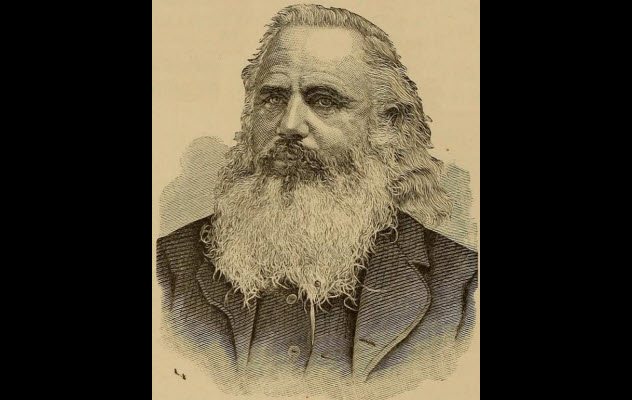
William Davies didn’t claim to be Christ himself, but he did claim that his son was the reincarnation of Jesus Christ—specifically known as the “Walla Walla Jesus.”
Born in 1833, Davies converted to Mormonism at 13 and left his native Wales for America in 1854 at age 21. When he got to the US, he was disappointed with the quality of the religious leadership he found, so he joined a branch of the Mormon Church led by James Morris, or “Praying Joe.” The Morrisites originally set up their home in Utah but were driven out by the Mormons after an armed siege. When Davies and his family headed to Walla Walla, Washington, and set up the Kingdom of Heaven, he officially declared it “the place.”
In 1868, Davies’s wife gave birth to their first son, who was named Arthur Davies but became known as Walla Walla Jesus when his father declared that Arthur was the reincarnation of Christ. The next year, Davies and his wife welcomed another son, who was said to be the “Spirit of God the Father.” Davies himself claimed that he was the “Holy Ghost.” His wife wasn’t included in the holy family.
The community was set up as a communal society, where everything belonged to the group and everything hinged on the word of Davies. The group believed in and followed Davies as the voice of God. He was aided in the daily affairs of the community by Grover Andrews, the communal disciplinarian who was given the title “Destroying Angel.”
Tragically, Walla Walla Jesus and the Daviesite God the Father died of diphtheria in 1880, bringing the whole thing to an end. When the community dissolved after a court battle, there were only 43 members. In 1881, Davies remarried a local teacher, claiming that she was the reincarnation of his first wife.
3 John Alexander Dowie
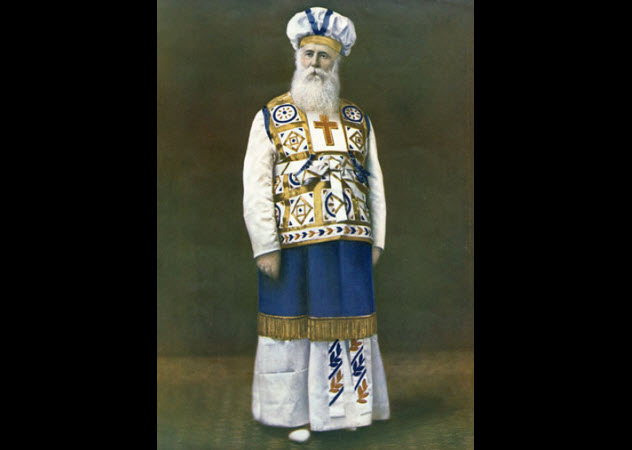
Born in Scotland and having settled into Australia to begin his ministry, John Alexander Dowie was already described as eccentric by the time he married his cousin in May 1876. After meeting a Mormon couple and realizing that he should think on a worldwide scale, Dowie decided to make his ministry a far-reaching one. He proposed joining the Mormons, but they declined his offer.
So in 1900, Dowie established Zion outside of Chicago. Quickly growing to a population of about 8,000 people, the city included everything from its own educational system to room for a 25,000-person temple. But Dowie didn’t style himself as the Second Coming of Jesus Christ. Instead, he called himself the General Overseer of the Christian Catholic Church, the Messenger of the Covenant, and the Restorer of All Things. He was the prophet Elijah, which made him the first apostle of the new church.
One of his most important doctrines was faith healing. Dowie believed that sickness resulted from an impurity in the body. When people turned to their faith, he believed that their hearts would become pure and their bodies would be healthy. Zion residents also had to follow a strict—and almost endless—set of rules. Otherwise, their possessions would be taken away.
He taught that Christ’s return was imminent and that Dowie was proof of that return. Clearly, God had put him on Earth to open the door for the Second Coming, and his ministry was going to be at the center of everything. When Christ returned to battle Satan and all his minions, the battle would be fought on the shoulders of what Dowie had built. As churches began popping up all over the world, Dowie’s works started showing up in other places, including in the writings of the Temperance movement.
Dowie never got to finish his work. In 1905, he suffered a stroke, most likely brought on by the stress of his preparations to convert the Mormons. Dowie had planned on going to Salt Lake City with claims that he had received a vision from God that polygamy should return to the Mormon community—as long as they followed Dowie to Mexico. But the upper echelons of Dowie’s own church didn’t agree with his views and staged a coup that removed their prophet from power. Dowie died in 1907.
2 Edmund Creffield
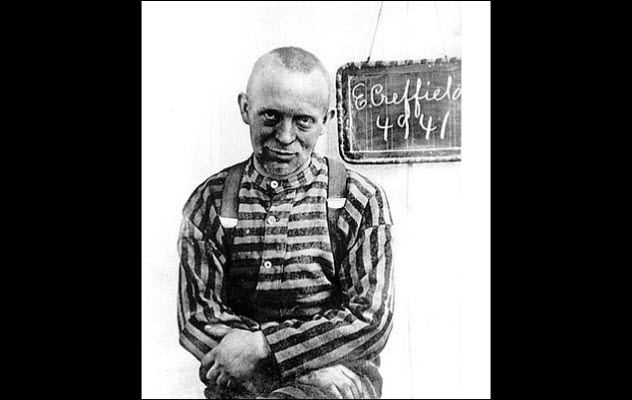
Edmund Creffield was the founder of the Brides of Christ Church in Corvallis, Oregon. They were also known as the “Holy Rollers” because of their tendency to descend into madness and ecstasy, rolling around on the floor—usually in various states of undress—as they worshiped. Creffield not only preached free love, he also claimed that one of the women of his congregation was destined to be the mother of the reincarnated Christ. He just had to do a little purifying first by his laying-on-hands ritual.
Needless to say, his claims that he was just doing God’s work and helping prepare women for the birth of the savior didn’t go over well. In 1904, he was tarred and feathered by a group of angry townspeople, and their anger certainly didn’t go away when he married one of his followers the next day. When one of the church members leveled charges of adultery against him (which was then a capital offense), he went into hiding. Creffield was the subject of a statewide manhunt, and some of his followers were so distraught that they were committed to the Oregon State Insane Asylum.
Eventually, Creffield was found, naked and starving, hiding beneath his mother-in-law’s house. After a brief stay in jail, he and his remaining followers headed to Waldport, where the husband of one of his followers tried to shoot him. The gun misfired.
Before long, George Mitchell, another follower’s brother, succeeded in killing Creffield, shooting him in front of witnesses and then pleading insanity. Mitchell claimed that he had no choice because his sister had been chosen to be Christ’s mother. Bizarrely, Mitchell was acquitted but then killed by that sister, who was committed to the Western State Hospital.
1 Jacob And Eve Frank
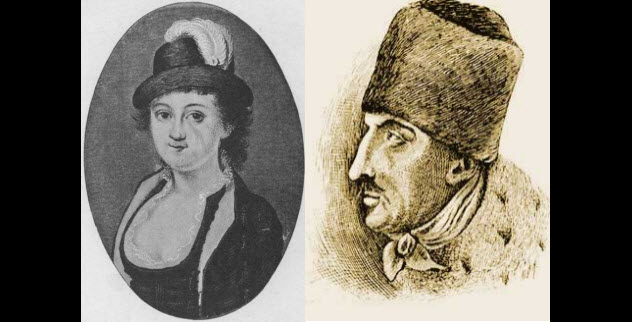
Jacob Frank believed in a different sort of religion. Rather than the traditional, male-dominated idea of God, he believed in a female Goddess that took on a human form. His beliefs gained enough of a following to become the rather widely accepted “Frankist movement.” At the center of it was his divine Maiden—his daughter, Eve Frank. By the time she was six months old, Eve was known to the other followers as the queen who would lead them to salvation. She was always attended by the daughters of the other followers.
At 15, Eve had her own cult. Those who wished to be welcomed into her presence needed to complete a series of rituals first—including kissing her feet, folding their hands before her without directly looking at her, and reciting appropriate Biblical passages. The movement wasn’t without its naysayers, though. Quite a few people suggested that Jacob Frank’s styling of himself as his daughter’s “partner” was a clear sign of an incestuous relationship, although that’s hearsay. But his doctrine did step way over the line of creepy.
Eve’s mother died when she was 16. After that, Eve was forbidden to marry or to leave Jacob’s side, staying with him even when he was jailed for his rather nontraditional beliefs. The Franks’ followers subscribed to a communal lifestyle where everything was shared, especially sexual partners. With no restrictions, that meant incest was absolutely fine, too. Jacob preached that he was destined to die and be reborn with Eve, this time as the Messiah with his beautiful lover. When he did die in 1791, it was seen as a temporary thing.
After his death, Eve continued her crusade to convert people to the Frankist movement. Although Eve died in 1816, there are still followers of the family who believe in Eve as a saint today.
